
In our previous post, we discussed the characteristics and tips for creating effective OKRs. Now, it’s time to dive into the actual process of crafting OKRs that can drive your business forward. This post will guide you through each step, from creating and refining OKRs to aligning them across your organization and finalizing them for action.
The Process to Create Great OKRs
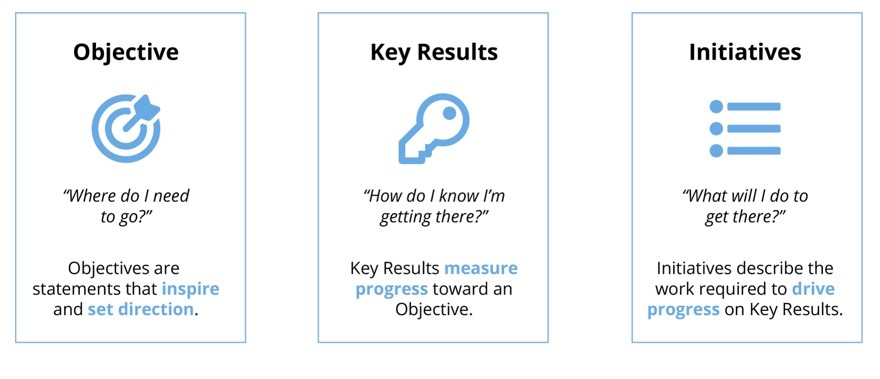
Create
The first step in crafting OKRs is to start small. Rather than using a large brainstorming group, which can lead to chaos and diluted focus, we recommend forming a very small team—just two or three people. This small group can dedicate the deep, time-consuming concentration needed to draft a set of OKRs that truly address your business challenges.
These small teams are tasked with tackling specific business problems and discovering creative solutions. They need the bandwidth to immerse themselves in the details—analyzing your competitive environment, scrutinizing your strategy, and identifying your core capabilities. These elements are the raw materials that lead to effective OKRs, and they must be carefully considered.
Whether you’re working at the corporate level or within a team, your small group should aim to document two to three objectives, each with one to three key results. These should be set at a stretch level—the 1.0 scoring level—to inspire high performance. (To be explained in detail later.)
Refine
Once your small team has drafted the initial set of OKRs, it’s time to bring them to a wider audience for review. Before your first full team meeting or workshop, share the draft OKRs with the relevant leadership group. If you’re working on corporate-level OKRs, this will involve the senior leadership team. For team-level OKRs, the team’s leadership group will need to be involved.
The purpose of this session is to critically examine the draft OKRs. The small team should explain their choices, and there should be vigorous debate to ensure that the OKRs are aligned with the broader goals of the organization. The objective is to reach a consensus on the OKRs that will guide your efforts for the upcoming quarter.
Align
In today’s business environment, much of the work is cross-functional, with teams collaborating to solve problems and create new ways of working. When crafting OKRs at the team level, it’s crucial to keep this context in mind.
After you have refined the OKRs, it’s time to take them on a “road trip” around the organization. This involves discussing your draft OKRs with other team leads, especially those on whom you depend or who depend on you. This step is all about ensuring alignment across teams, so everyone is working towards the same goals.
For instance, if one of your key results is highly dependent on another team’s assistance, you’ll want to ensure they acknowledge this dependency and pledge their support. Similarly, you’ll want to understand how your team can support other teams in achieving their OKRs.
Finalize
Once the alignment process is complete, it’s time to finalize your OKRs. If you’re working at the team level, the team lead and partners should meet with their superior—likely a member of the senior executive team—to get final approval for the OKRs.
Transmit
The final step in the crafting process involves two key tasks. First, you need to load your OKRs into a software system or a tracking tool such as Google Sheets or Excel. This is a simple but vital process. OKRs must be rigorously and formally cataloged to maintain the integrity of the entire OKR process.
Second, you need to communicate the OKRs to your team and beyond. We strongly recommend sharing them widely using a variety of media. An in-person meeting, such as an all-hands or town hall style gathering, is particularly effective. This provides an opportunity for employees who weren’t directly involved in the OKR creation process to ask questions and gain a deeper understanding of the decisions made.
The OKR Crafting Process
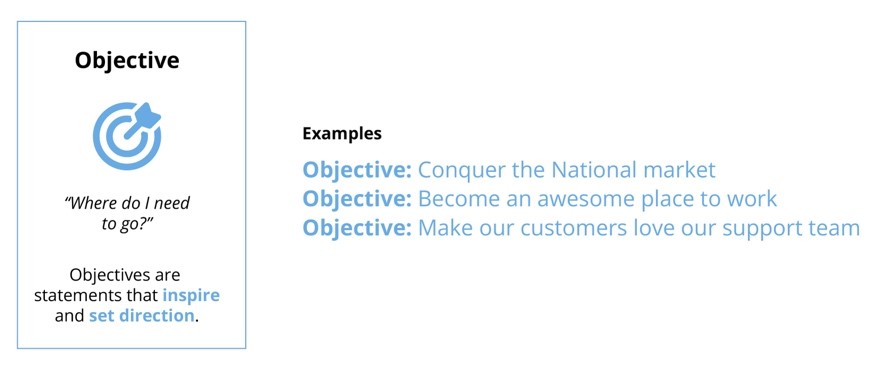
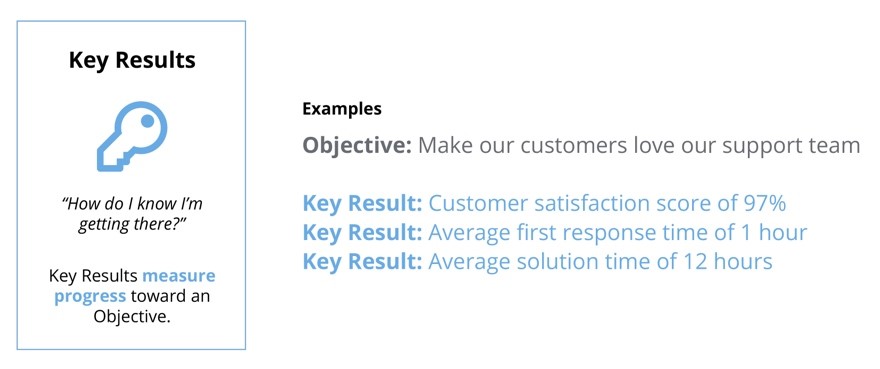
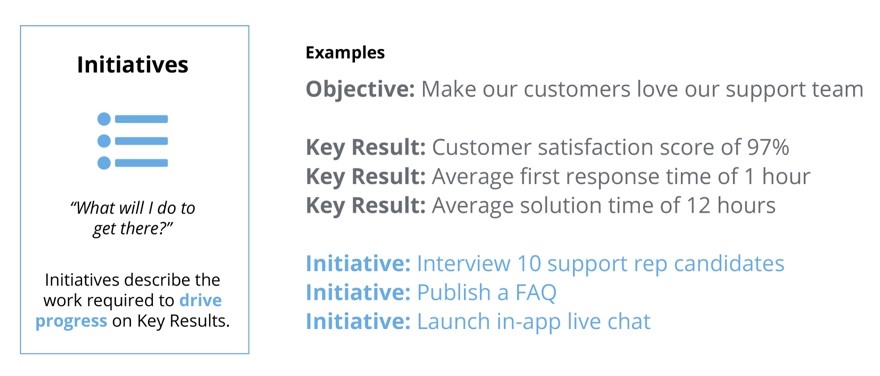
OKR Football Example
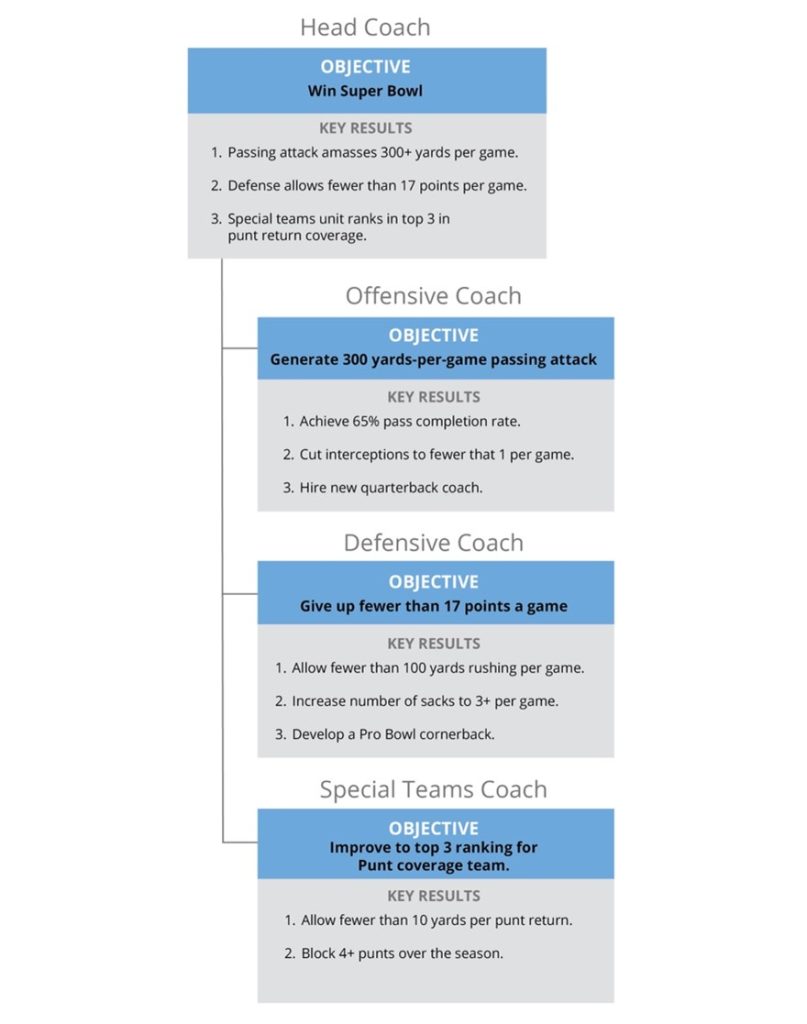
How Many OKRs Should We Have?
The late screenwriter Nora Ephron, famous for writing classics like When Harry Met Sally, Sleepless in Seattle, and Silkwood, had a remarkable talent for capturing the essence of a story. But before she became a Hollywood legend, Ephron was a journalist. She often credited her high school Journalism 101 teacher, Charlie Simms, with teaching her the most valuable lesson she ever learned about storytelling.
On the first day of class at Beverly Hills High School, Simms introduced his students to the concept of a “lead”—the opening sentence that captures the most critical elements of a news story. He explained that a good lead answers the who, what, when, and where. To drive the point home, he gave the class their first assignment: write the lead to a story based on the following facts:
Kenneth L. Peters, the principal of Beverly Hills High School, announced today that the entire high school faculty will travel to Sacramento next Thursday for a colloquium on new school methods. Among the speakers will be anthropologist Margaret Mead, college president Dr. Robert Maynard Hutchins, and California Governor Edmund “Pat” Brown.
The students furiously hammered away on their typewriters, each trying to craft a concise lead that summarized the who, what, when, and where. Their leads were variations of: “Margaret Mead, Maynard Hutchins, and Governor Brown will address the faculty on…” or “Next Thursday, the high school faculty will…”
When they finished, Simms reviewed their leads and set them aside. Then he told them they were all wrong. “The lead,” he said, “is ‘There will be no school Thursday!'”
In that moment, Ephron realized that journalism—and storytelling in general—wasn’t just about regurgitating facts. It was about figuring out what really mattered, cutting through the noise to find the point that resonated most.
Ephron would later say that this lesson worked as well in life as it did in journalism. And, as it turns out, it works great for OKRs too.
When you gather with your team to decide on your OKRs, you’re faced with a universe of possibilities. Customer concerns, shareholder interests, employee needs, competitive pressures—the list is endless. These are the organizational equivalent of the “who, what, when, and where.” Your challenge is to cut through the clutter and identify what is most important, what will have the most impact right now—essentially, the “lead” of your business story.

So, how many OKRs should you have? We recommend following the principle of “less is more.” There is a significant opportunity cost to increasing your inventory of OKRs—namely, a lack of clarity and focus around what the company’s true priorities are. When you begin your OKR process, we suggest generating a small number—a handful at most—of objectives that are crucial to executing your strategy for the year. Then, as the year progresses, adjust your tactical objectives each quarter to keep moving those strategic objectives forward.
Next up… Driving OKR Alignment.

Bill Gelbaugh is one of our Senior Partners here at Outhouse and champions our OKR efforts.